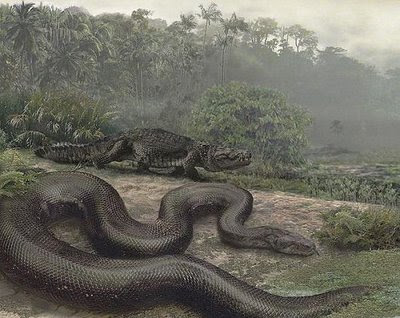Snakes the Most Wonder Of Life
The Biggest Snake to Have Ever Lived
If you think that an anaconda big enough to swallow a capybara or tapir whole is big, you should see the size of the giant snake scientists discovered in a coal mine in Columbia, South America in 2008. Fossils of an enormous snake were discovered in an open coal mine in the Amazon rainforest. Paleontologists estimated the length of the snake to be 43 feet long and estimated to weigh 2,500 pounds! Based on their findings, the scientists who identified this new species of snake said it was large enough to prey on crocodiles. Since snakes are cold-blooded, the average temperature of the Amazon had to have been 6 to 8 degrees warmer to support a snake that enormous.
Killer Snake
Anacondas are members of the boa constrictor family of snakes. That means that they kill their prey by coiling their large, powerful bodies around their victims and squeezing until their prey suffocates or is crushed to death and dies from internal bleeding. Then the snake unhinges its jaw and swallows the victim whole. Anacondas are much more likely to eat aquatic creatures, such as fish. Occasionally, they have been known to eat: caimans (a relative of the alligator), other snakes, deer, and even jaguars. Anacondas are rather slow-moving snakes, so they have to rely on stealth and the element of surprise to catch their unsuspecting prey.
Do Anacondas Bite?
Just about every species of snake on earth has teeth, but the anacondas' teeth are not used for chewing. Snakes' teeth are used for holding onto their prey, preventing them from escaping. Some snakes have venom in two specially designed, extra long teeth (called fangs) which they use to kill their prey. Anacondas have teeth, but they are not a venomous snake. They rely on their enormous size and power to subdue their victims. It is possible to be bitten by an anaconda, but the bite itself would not be fatal.

No comments:
Post a Comment